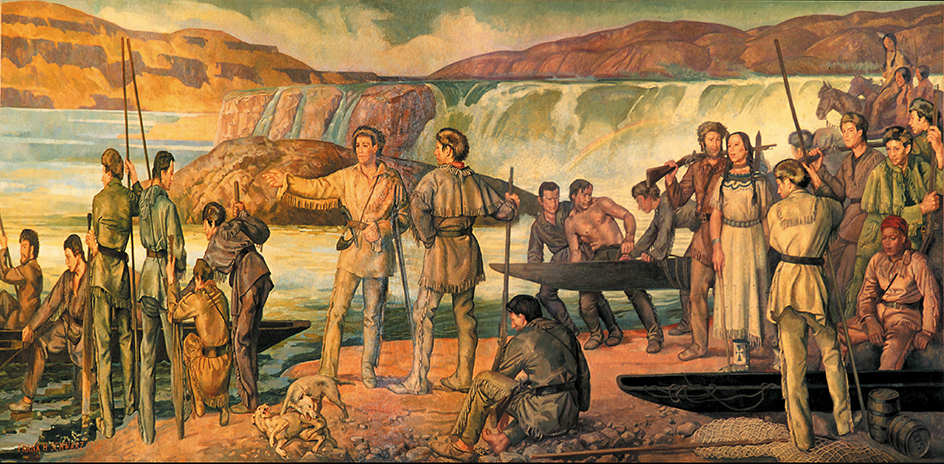Sacagawea, << sah `kah` guh WEE uh >> (1787?-1812), was a Native American Shoshone woman who accompanied the Lewis and Clark expedition in 1805 and 1806. The expedition, an early exploration of the northwestern United States, was led by U.S. Army officers Meriwether Lewis and William Clark. Sacagawea has often been depicted in art and literature as the expedition’s heroic guide. But in reality, her contributions, though important, were much more limited. Sacagawea’s name means Bird Woman. It is also spelled Sacajawea << `sak` uh juh WEE uh >> or Sakakawea << sah KAH kah `wee` uh >> .

Sacagawea joined the expedition in what is now North Dakota, after Lewis and Clark had hired her husband as an interpreter during the winter of 1804-1805. Sacagawea’s husband was a French-Canadian trader named Toussaint Charbonneau. Lewis and Clark thought Sacagawea might be helpful when the expedition reached Shoshone territory in the Rocky Mountains.
In the Rockies in August 1805, the explorers met a band of Shoshone whose chief was Sacagawea’s brother or a close relative. Sacagawea aided in communication between the Shoshone and the explorers. She also helped secure horses from the tribe for the explorers. Sacagawea died on Dec. 20, 1812. A number of geographic landmarks, monuments, and memorials have been named for her. In addition, a U.S. dollar coin commemorating Sacagawea went into circulation in early 2000. In 2003, North Dakota placed a statue of Sacagawea in the U.S. Capitol in Washington, D.C.
See also Lake Sakakawea.

